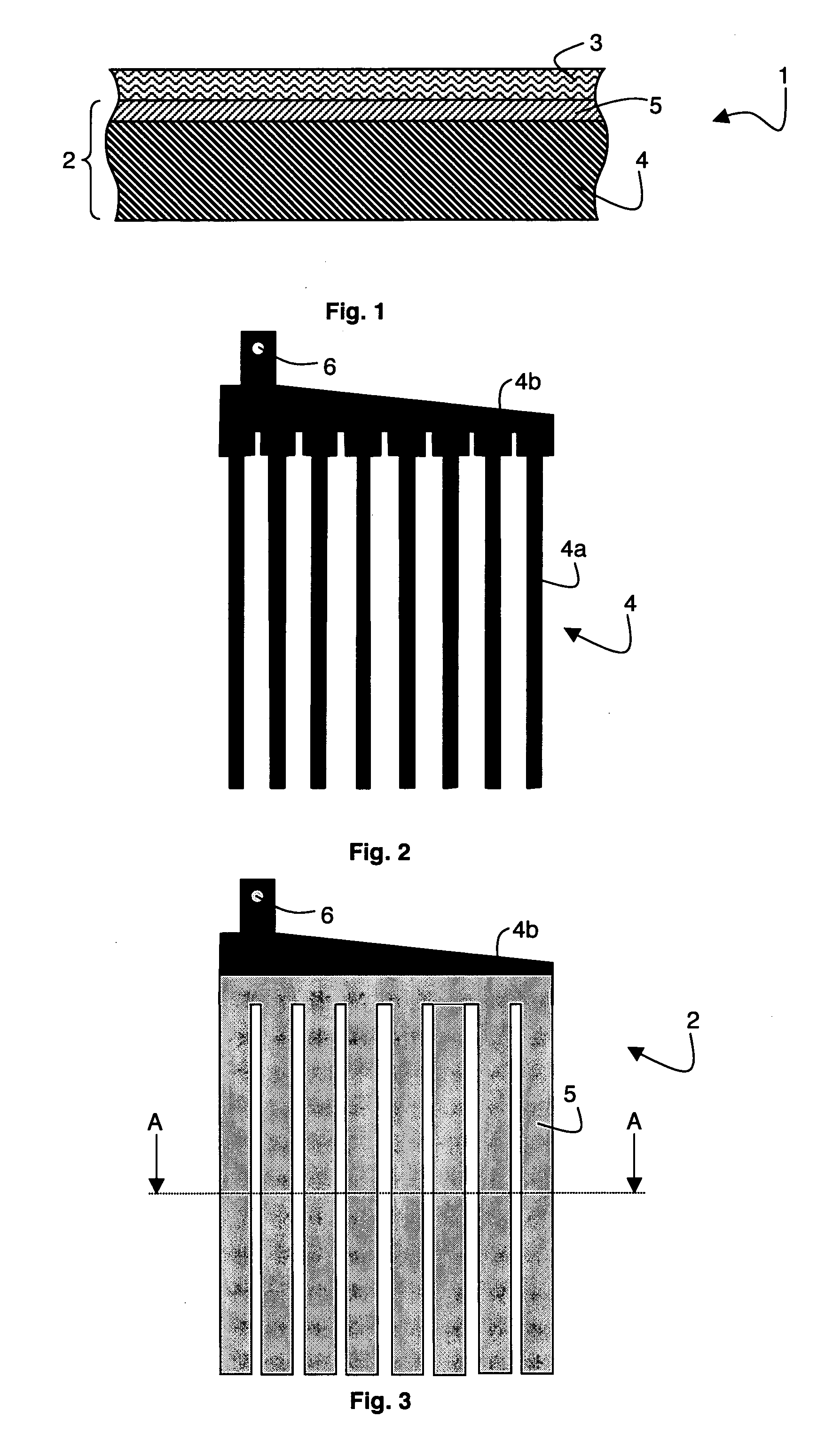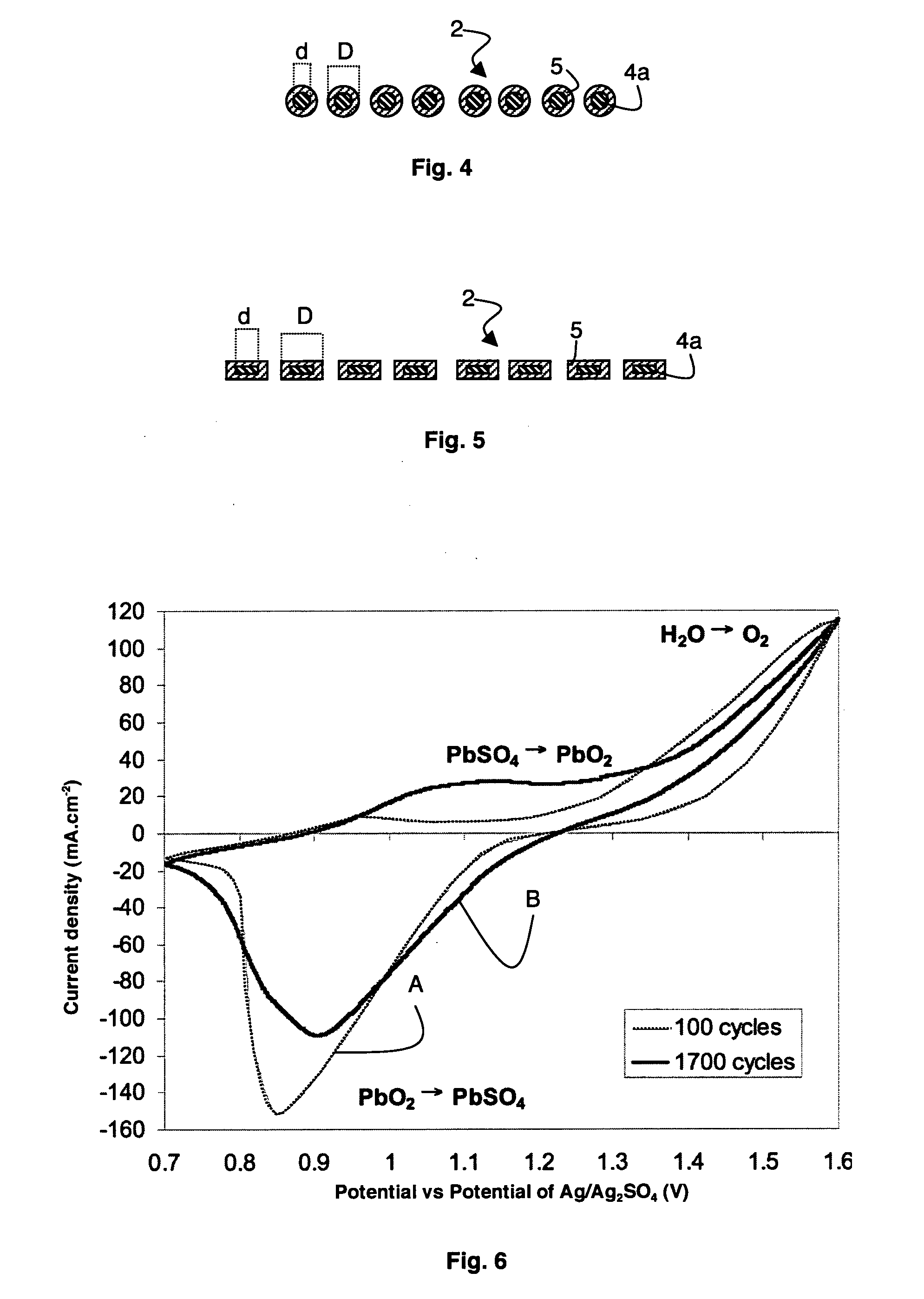Electrode for lead-acid battery and method for producing such an electrode
a lead-acid battery and electrode technology, applied in the field of electrodes for lead-acid batteries, to achieve the effect of improving mechanical and electrical connections
- Summary
- Abstract
- Description
- Claims
- Application Information
AI Technical Summary
Benefits of technology
Problems solved by technology
Method used
Image
Examples
Embodiment Construction
[0038]As represented in FIG. 1, an electrode 1 for lead-battery comprises a current collector 2 covered by an active layer 3 of lead-containing paste. The current collector 2 is formed by a glassy carbon substrate 4 on which is deposited an intermediate layer 5. The glassy carbon substrate 4 has preferably a thickness comprised between 1 mm and 3 mm whereas the thickness of the intermediate layer 5 is advantageously comprised between 50 μm and 200 μm.
[0039]The glassy carbon material is also called vitreous carbon, glassy polymeric carbon or vitreous polymeric carbon. The glassy carbon is a special form of carbon. It is a low-porous carbon. Thus, the glassy carbon substrate 4 comprises pores but the volume of these pores only represent between 0% and 10% of the apparent volume of the substrate. More particularly, the ratio between the volume of pores and the apparent volume is comprised between 1% and 6%. In addition, the glassy carbon material presents high electric conductivity pro...
PUM
| Property | Measurement | Unit |
|---|---|---|
| Fraction | aaaaa | aaaaa |
| Fraction | aaaaa | aaaaa |
| Fraction | aaaaa | aaaaa |
Abstract
Description
Claims
Application Information
 Login to View More
Login to View More - R&D
- Intellectual Property
- Life Sciences
- Materials
- Tech Scout
- Unparalleled Data Quality
- Higher Quality Content
- 60% Fewer Hallucinations
Browse by: Latest US Patents, China's latest patents, Technical Efficacy Thesaurus, Application Domain, Technology Topic, Popular Technical Reports.
© 2025 PatSnap. All rights reserved.Legal|Privacy policy|Modern Slavery Act Transparency Statement|Sitemap|About US| Contact US: help@patsnap.com



